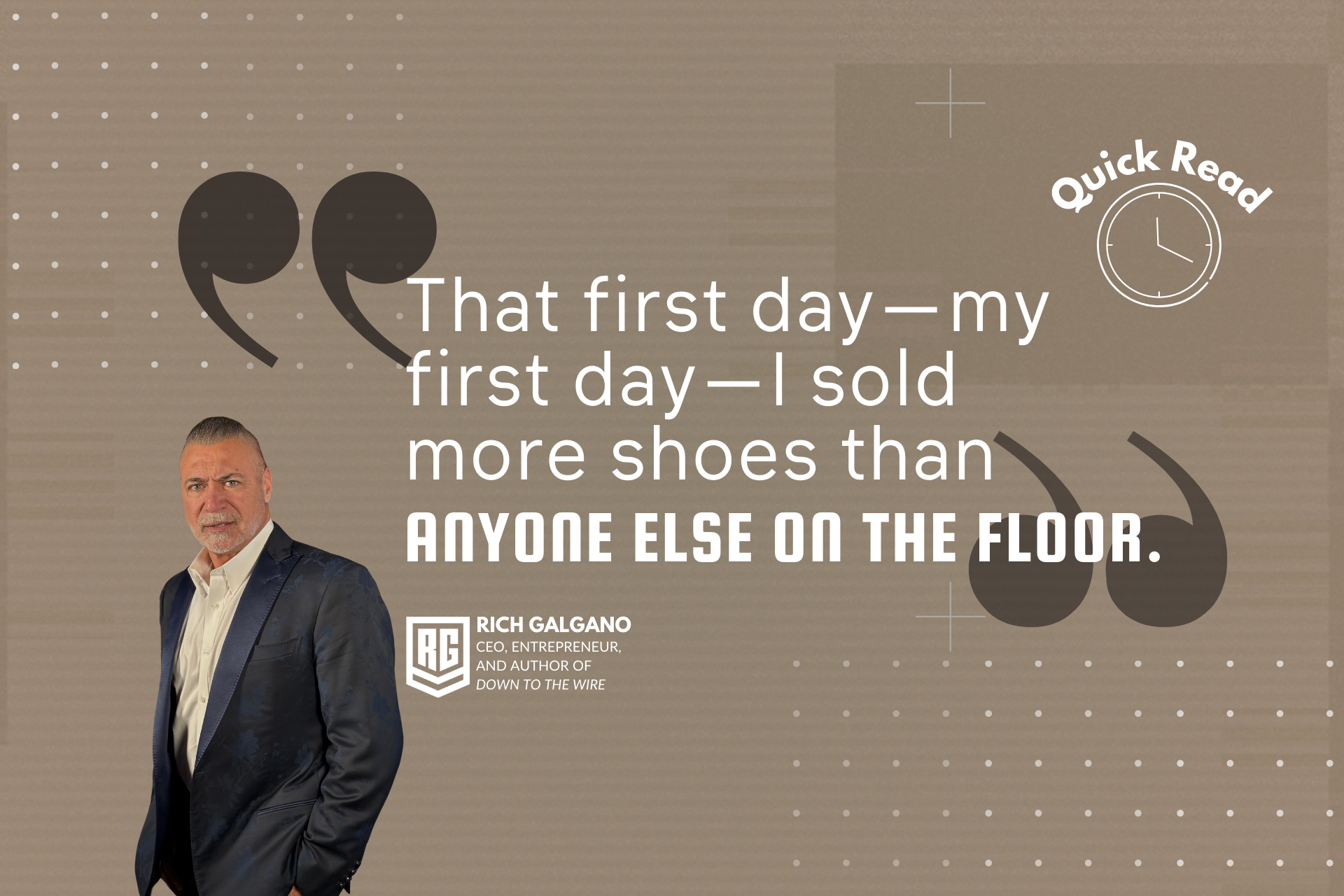"The Word 'Problem' Can Be a Problem": A Guide to Focusing on Enhancement Instead of Problem-Solving
By Rich Galgano
How often do you walk into a pitch or meeting thinking you know exactly what the prospect’s problem is? If you do, you’re ahead of the game. But tread carefully. Why? Because most people do not being being told they have a problem. The moment you say, “You’ve got this issue,” walls go could up, and the conversation may shift from collaborative to combative.
The solution is framing. Focus on enhancement rather than problem-solving. By positioning your product or service as an improvement, you can create a positive, open environment. Over time, the prospect will naturally realize that what you’re enhancing is solving a problem—one they might not have even recognized they had.
Why This Approach Matters
1. It Reduces Resistance:
People resist being told they’re wrong or have flaws. Framing your pitch as an enhancement sidesteps defensiveness.
2. It Builds Collaboration:
Talking about improvements fosters a “we’re in this together” dynamic, making the conversation feel like a partnership, not a critique.
3. It Guides Self-Discovery:
When prospects discover problems on their own, they’re more likely to trust you and act on your solution.
How to Apply This in Sales
Step 1: Start with a Vision
Instead of pointing out a problem, paint a picture of what life could look like with your product or service.
- Example: “Have you ever thought about how much more efficient your team could be with a system that streamlines every step of the process?”
This helps keeps the tone positive and focuses on possibilities, not shortcomings.
Step 2: Position as an Enhancement
Frame your offering as something that adds value, rather than something that fixes a flaw.
- Example: “Our system is designed to take what you’re already doing and make it even better—saving time, improving organization, and boosting overall productivity.”
You’re saying, “Here’s how to take things to the next level,” not, “Your current setup is broken.”
Step 3: Let Them Connect the Dots
As you demonstrate benefits, the prospect will often realize on their own what’s lacking in their current setup.
- Example: “You know, now that you mention it, we spend a lot of time in a state of disorganization.”
That’s their moment of realization, and because it came from them, it feels empowering rather than threatening.
Step 4: Reinforce the Positive
When the prospect recognizes the issue, keep the focus on positive outcomes.
- Example: “Exactly! That’s why so many teams rely on our system—it eliminates obstacles and streamlines productivity.”
By steering the conversation back to enhancement, you are able to maintain a collaborative, optimistic tone.
Lessons for Sales Teams
1. Defensiveness Kills Deals:
If you lead with, “You have a problem,” prospects will spend the conversation justifying their current setup instead of listening.
2. Enhancement Opens Doors:
Framing your pitch as an improvement creates a solutions-focused atmosphere that prospects respond to.
3. Self-Discovery Builds Trust:
When prospects uncover the problem themselves, they feel in control and trust you as their guide to the solution.
Final Thoughts
As a salesperson, your job isn’t to point out problems—it’s mostly to guide prospects toward self-discovery. By focusing on enhancement, you create an environment where they feel in control, open to your solution, and empowered to act.
Stay in Code Yellow. Be alert, collaborative, and focused on the value you bring to the table. Because in sales, it’s not just about closing deals—it’s about building trust, delivering value, and leading the prospect to a place of self-discovery.











